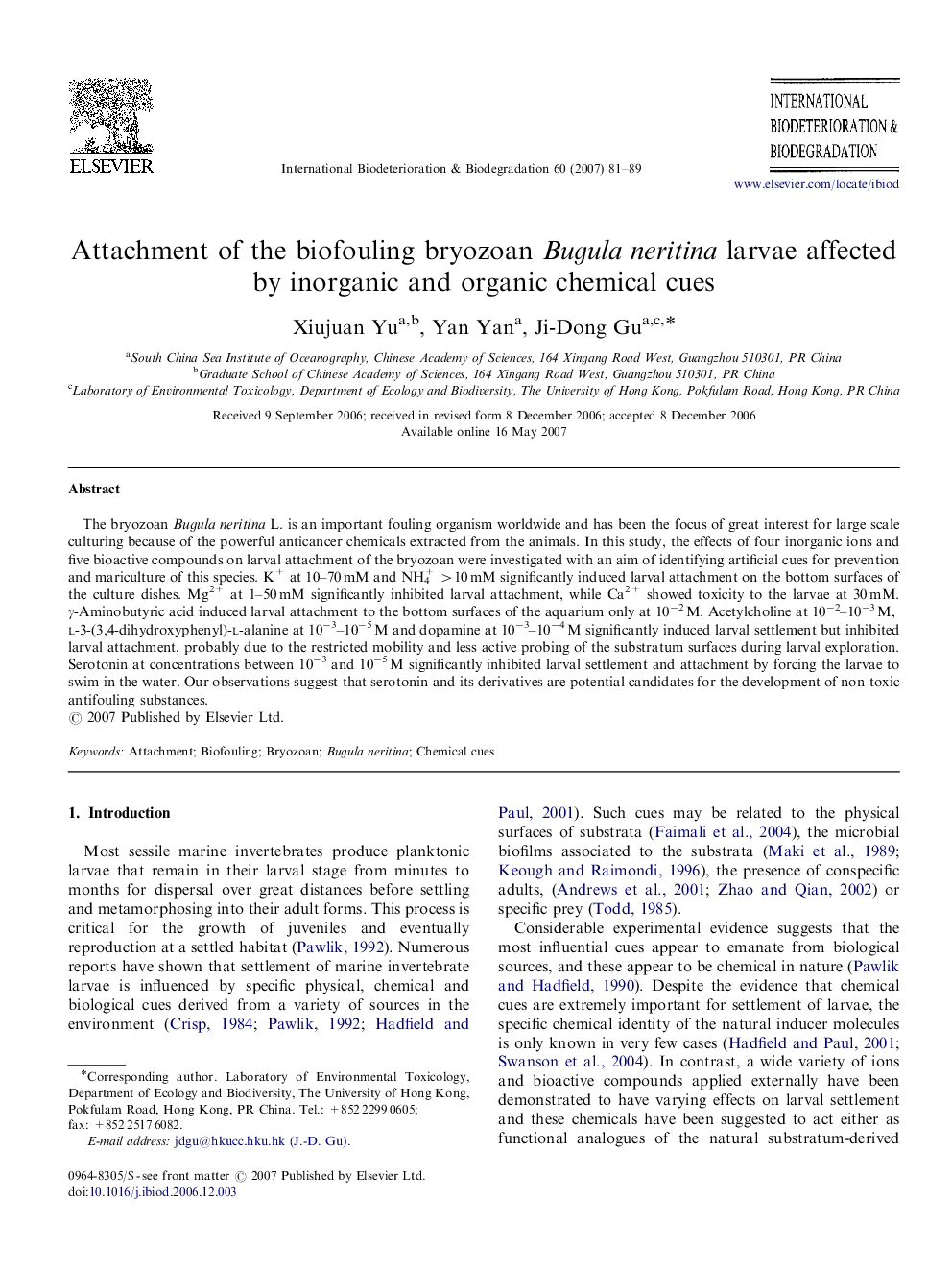| کد مقاله | کد نشریه | سال انتشار | مقاله انگلیسی | نسخه تمام متن |
|---|---|---|---|---|
| 4365996 | 1301802 | 2007 | 9 صفحه PDF | دانلود رایگان |

The bryozoan Bugula neritina L. is an important fouling organism worldwide and has been the focus of great interest for large scale culturing because of the powerful anticancer chemicals extracted from the animals. In this study, the effects of four inorganic ions and five bioactive compounds on larval attachment of the bryozoan were investigated with an aim of identifying artificial cues for prevention and mariculture of this species. K+ at 10–70 mM and NH4+ >10 mM significantly induced larval attachment on the bottom surfaces of the culture dishes. Mg2+ at 1–50 mM significantly inhibited larval attachment, while Ca2+ showed toxicity to the larvae at 30 mM. γ-Aminobutyric acid induced larval attachment to the bottom surfaces of the aquarium only at 10−2 M. Acetylcholine at 10−2–10−3 M, l-3-(3,4-dihydroxyphenyl)-l-alanine at 10−3–10−5 M and dopamine at 10−3–10−4 M significantly induced larval settlement but inhibited larval attachment, probably due to the restricted mobility and less active probing of the substratum surfaces during larval exploration. Serotonin at concentrations between 10−3 and 10−5 M significantly inhibited larval settlement and attachment by forcing the larvae to swim in the water. Our observations suggest that serotonin and its derivatives are potential candidates for the development of non-toxic antifouling substances.
Journal: International Biodeterioration & Biodegradation - Volume 60, Issue 2, 2007, Pages 81–89